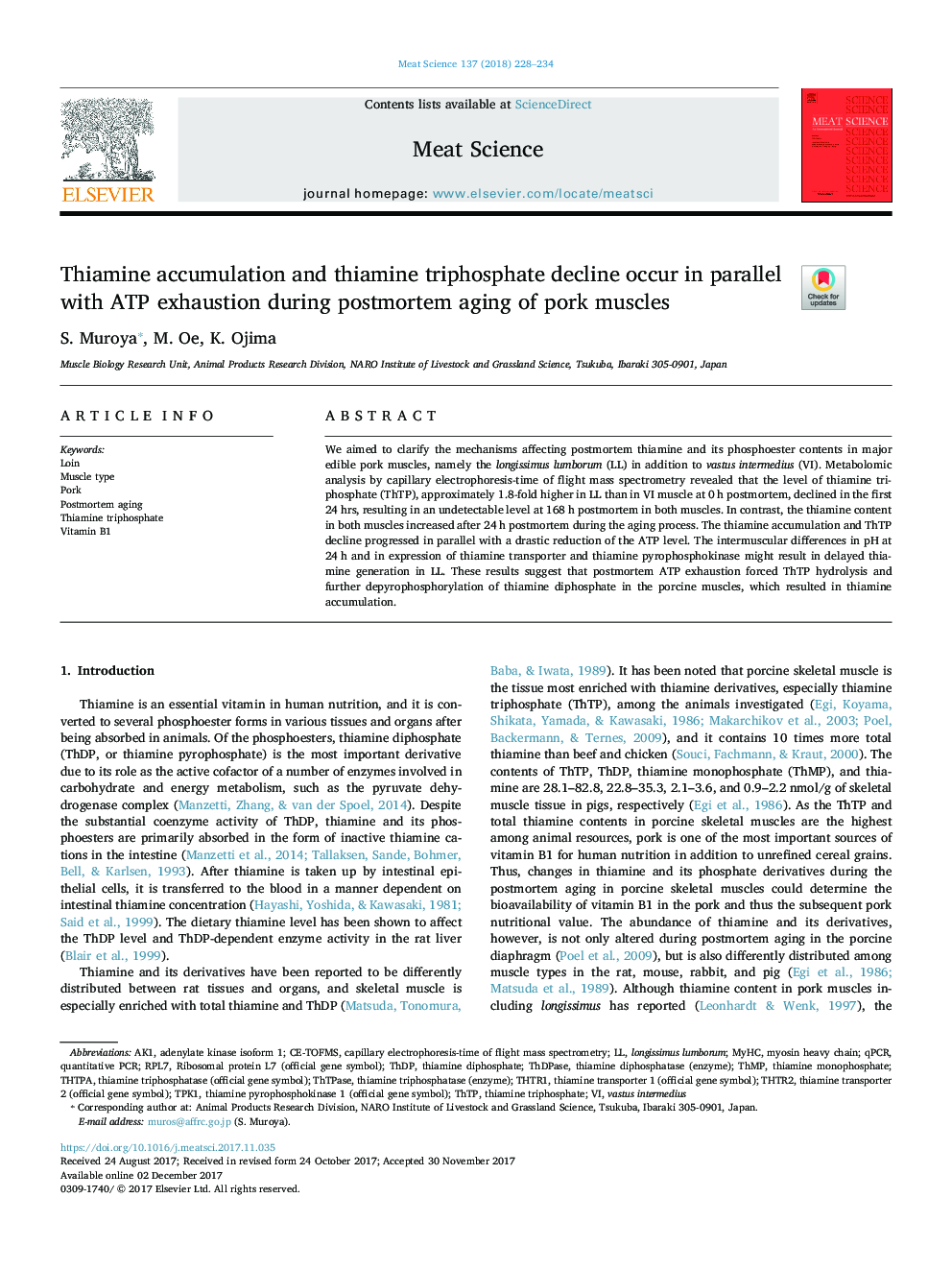| Article ID | Journal | Published Year | Pages | File Type |
|---|---|---|---|---|
| 8503190 | Meat Science | 2018 | 7 Pages |
Abstract
We aimed to clarify the mechanisms affecting postmortem thiamine and its phosphoester contents in major edible pork muscles, namely the longissimus lumborum (LL) in addition to vastus intermedius (VI). Metabolomic analysis by capillary electrophoresis-time of flight mass spectrometry revealed that the level of thiamine triphosphate (ThTP), approximately 1.8-fold higher in LL than in VI muscle at 0Â h postmortem, declined in the first 24Â hrs, resulting in an undetectable level at 168Â h postmortem in both muscles. In contrast, the thiamine content in both muscles increased after 24Â h postmortem during the aging process. The thiamine accumulation and ThTP decline progressed in parallel with a drastic reduction of the ATP level. The intermuscular differences in pH at 24Â h and in expression of thiamine transporter and thiamine pyrophosphokinase might result in delayed thiamine generation in LL. These results suggest that postmortem ATP exhaustion forced ThTP hydrolysis and further depyrophosphorylation of thiamine diphosphate in the porcine muscles, which resulted in thiamine accumulation.
Keywords
Related Topics
Life Sciences
Agricultural and Biological Sciences
Food Science
Authors
S. Muroya, M. Oe, K. Ojima,
